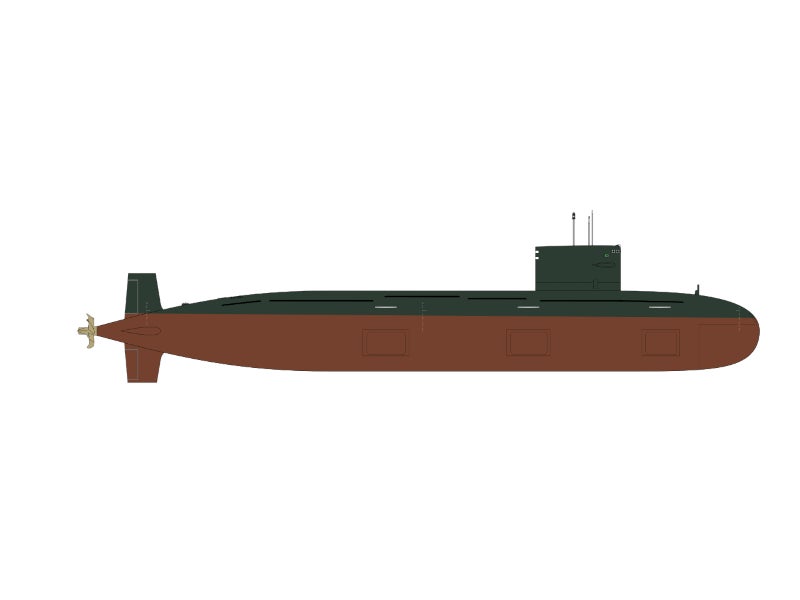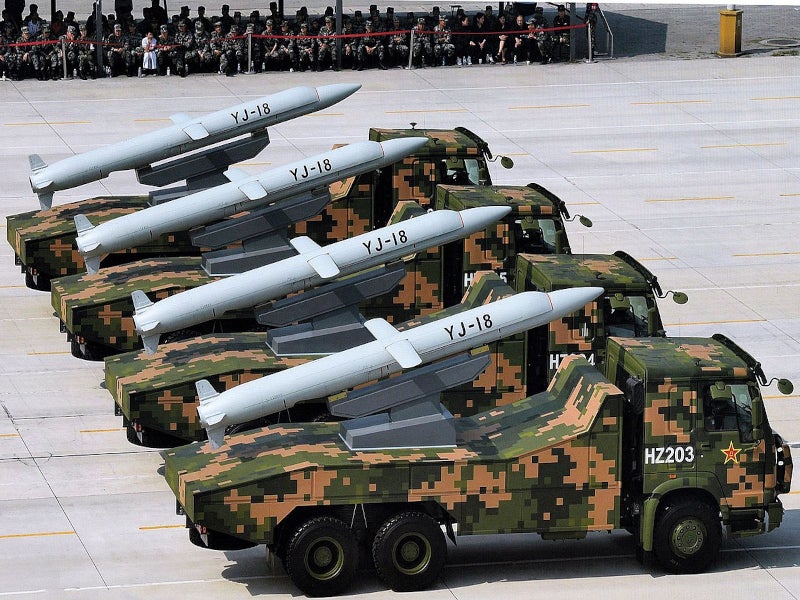The Shang-class is a family of Chinese second-generation nuclear-powered attack submarines (SSNs) built by China Shipbuilding Industry (CSIC) at its Bohai Shipyard in Huludao, Liaoning Province, China.
A total of six Shang-class submarines, including Shang I class SSNs (Type 093), Shang II class SSNs (Type 093A) and Shang III class SSNs (Type 093B), are in service with the People’s Liberation Army Navy (PLAN). The Type 093A and Type 093B SSNs are improved versions of the Type 093 submarine.
In its 2022 annual report on China’s Military Power, the US Department of Defense (DoD) indicated that China is likely to build a new Type 093B submarine by the mid-2020s to improve the anti-surface warfare capabilities of PLAN. The submarine is also expected to provide a clandestine land-attack option when armed with land-attack cruise missiles (LACM).
Development details of the Shang-class attack submarine
In the mid-1980s, PLAN began the development of the Type 093 nuclear attack submarine in order to replace its first-generation Type 091 (Han-class) submarine.
The work moved ahead significantly following the transfer of Russian nuclear submarine technology to China in exchange for urgently needed money in the later 1990s. Rubin Central Design Bureau for Marine Engineering, a submarine designer based in Russia, provided consultation for the development of Type 093, including the overall hull design, reducing internal radiated noise of engine and machinery, combat and weapons systems, and countermeasures.
Construction of Shang I class Type 093 reportedly began at the Bohai Shipyard in the late 1990s. The submarine went through sea trials for four years before being commissioned by the PLAN in 2006. The second Shang I class submarine was accepted into service in 2007. Modifications were later made to its design to develop the Shang II class submarine. The first Shang II class submarine was launched in 2012 and commissioned in 2015.
Shang-class submarine design and features
The Shang-class submarine is 107m long, with a beam of 11m and draught of 7.5m. It has a displacement of 7,000t when dived. Its design includes a water-drop-shaped hull. A pair of fin-mounted hydroplanes and four diving planes are used to control the motion of the submarine.
The vessel can accommodate 100 crew members and features a computerised fire control system in the form of a multi-purpose combat data and command system.
The Shang II class Type 093A and Shang III class Type 093B submarines feature a redesigned sail with a tapered front, rounded sail top without sail windows and fillet at the base of the sail.
The Type 093B vessel also has a curved hump, or protuberance, aft of the sail, which extends along the sides of the sail and measures 11.2m long and 0.8m high.
Radar and sonar systems
The Shang-class submarine features a surface search radar, radar warning receiver and direction-finder.
The submarine is equipped with six improved H/SQG-207 flank-mounted sonar arrays, three on either side, visible on the hull of the vessel. The submarine is also installed with H/SQ2-262 bow-mounted, medium-frequency sonar for active/passive search and attack, as well as additional low-frequency sonar, passive ranging and intercept, and a towed array sonar for active search and attack.
Armaments on board Shang-class submarines
The newest versions of the Shang-class submarine are expected to be armed with the PLAN’s domestic submarine-launched YJ-18 anti-ship cruise missile (ASCM) and its variants.
The hump behind the sail of the Type 093B submarine houses a towed array deployment tube, which is expected to accommodate a missile vertical launch system (VLS) capable of carrying and launching YJ-18 ASCM, the Yu-8 rocket-propelled torpedo and the CJ-10 LACM.
The Type 093 submarine can be armed with six 533mm bow-mounted torpedo tubes, four above and two below, to attack hostile ships and submarines. The tubes can be loaded with anti-submarine and anti-surface wire-, acoustic- and wake-homing torpedoes, or the YJ-82 ASCM.
The Type 093 submarine can carry either 20 torpedoes or 36 mines as a basic load.
Propulsion system and performance
The Shang-class submarine is powered by a pressurised water nuclear reactor engine. The propulsion unit drives a single shaft with a seven-blade propeller. It can reach a maximum speed of 30k.






